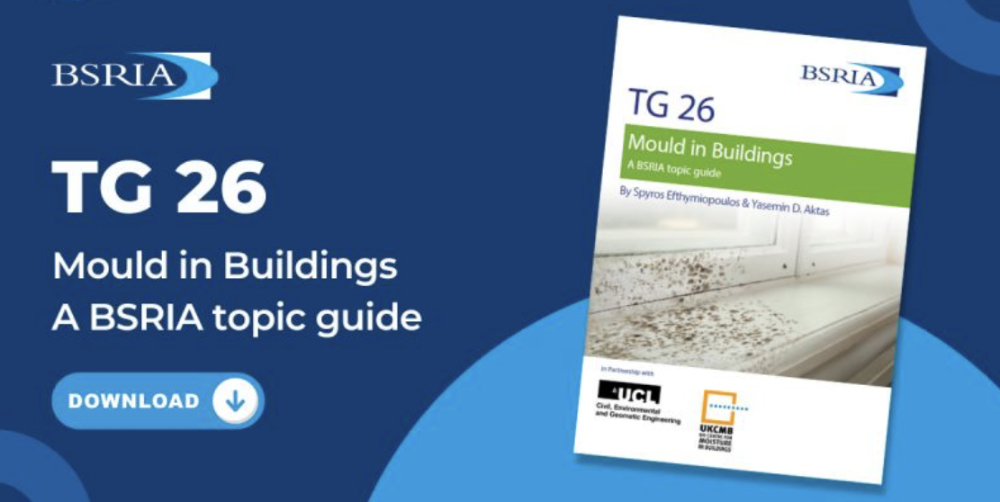BSRIA topic guide on mould in buildings TG 26/2024
Mould and dampness constitute an issue that affects millions of buildings every year. This BSRIA topic guide gives an overview of how mould occurs in buildings, how it can be diagnosed and what mitigation strategies can be put in place.
Mould and dampness constitute an issue that affects millions of buildings every year. Dampness refers to signs of water damage on building materials due to excess moisture in the air or within the materials. On the other hand, moulds are living microorganisms that grow on surfaces forming darker spots and can move through the air.
This BSRIA topic guide includes sections on:
- Determinants of mould in a building context
- Mould diagnostics
- Mould mitigation strategies
It is published in partnership with the UK Centre for Moisture in Buildings (UKCMB) and UCL Department of Civil, Environmental and Geomatic Engineering (CEGE).
The guide is available to download here.
BSRIA, in conjunction with UKCMB and UCL-CEGE will be delivering a webinar on mould in buildings on 5th February 2025 13:00-14:00. For more information including registration, click here.
This article first appeared on the BSRIA news and blogsite as 'Mould in Buildings (TG 26/2024)' in January 2025.
--BSRIA
[edit] Related articles on Designing Buildings
- Approved Document C.
- Condensation.
- Damp and timber report.
- Damp proofing.
- Degradation of construction materials.
- Dry rot fungus.
- Humidity.
- Mould growth in buildings.
- Moulds in historic buildings.
- Moisture.
- Penetrating damp.
- Recognising wood rot and insect damage in buildings.
- Rising damp.
- Rising damp in walls - diagnosis and treatment (DG 245).
- Ventilation.
- Wet rot.
Featured articles and news
RTPI leader to become new CIOB Chief Executive Officer
Dr Victoria Hills MRTPI, FICE to take over after Caroline Gumble’s departure.
Social and affordable housing, a long term plan for delivery
The “Delivering a Decade of Renewal for Social and Affordable Housing” strategy sets out future path.
A change to adoptive architecture
Effects of global weather warming on architectural detailing, material choice and human interaction.
The proposed publicly owned and backed subsidiary of Homes England, to facilitate new homes.
How big is the problem and what can we do to mitigate the effects?
Overheating guidance and tools for building designers
A number of cool guides to help with the heat.
The UK's Modern Industrial Strategy: A 10 year plan
Previous consultation criticism, current key elements and general support with some persisting reservations.
Building Safety Regulator reforms
New roles, new staff and a new fast track service pave the way for a single construction regulator.
Architectural Technologist CPDs and Communications
CIAT CPD… and how you can do it!
Cooling centres and cool spaces
Managing extreme heat in cities by directing the public to places for heat stress relief and water sources.
Winter gardens: A brief history and warm variations
Extending the season with glass in different forms and terms.
Restoring Great Yarmouth's Winter Gardens
Transforming one of the least sustainable constructions imaginable.
Construction Skills Mission Board launch sector drive
Newly formed government and industry collaboration set strategy for recruiting an additional 100,000 construction workers a year.
New Architects Code comes into effect in September 2025
ARB Architects Code of Conduct and Practice available with ongoing consultation regarding guidance.
Welsh Skills Body (Medr) launches ambitious plan
The new skills body brings together funding and regulation of tertiary education and research for the devolved nation.
Paul Gandy FCIOB announced as next CIOB President
Former Tilbury Douglas CEO takes helm.
UK Infrastructure: A 10 Year Strategy. In brief with reactions
With the National Infrastructure and Service Transformation Authority (NISTA).
























